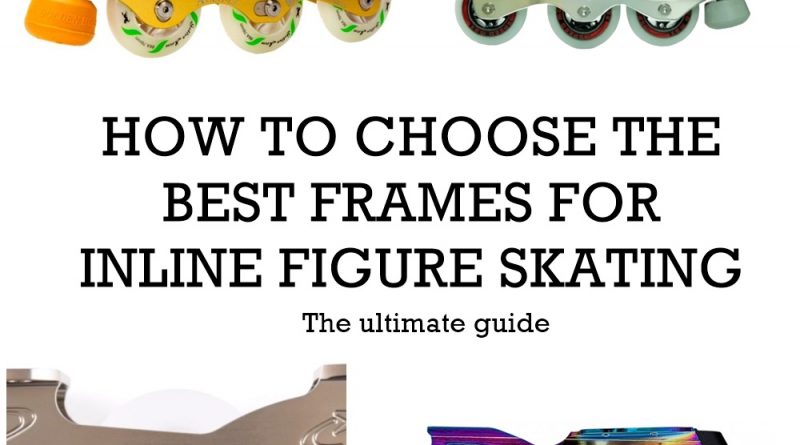
FRAMES
Inline figure skating frames, an often overlooked yet critical component of inline skates, play a significant role in determining a skater’s stability, maneuverability, and overall performance on the rink. Inline figure skates are made of four main parts: boots, toe stops (or brakes), wheels and frames. Understanding the key aspects of inline figure skating frames is essential for skaters looking to optimize their experience. Here’s a comprehensive guide covering everything you should know about inline figure skating frames:
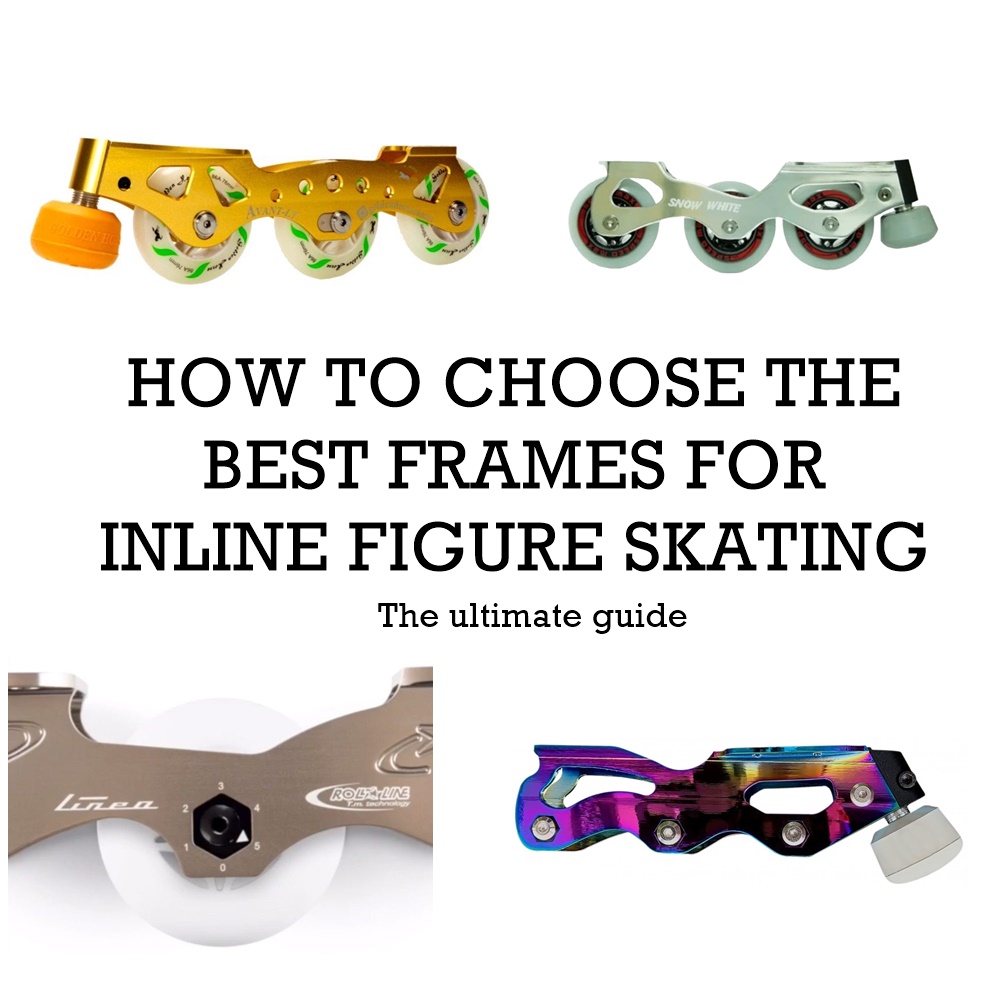
- Frame Materials:
- Aluminum: Widely used in inline figure skating frames, aluminum provides a balanced combination of strength, durability, and lightweight properties. High-quality aluminum frames offer excellent energy transfer and responsiveness, enhancing the skater’s control during routines.
- Carbon Fiber: Some advanced frames incorporate carbon fiber elements, known for their exceptional strength-to-weight ratio. Carbon fiber frames contribute to reduced weight without compromising structural integrity, appealing to skaters seeking a high-performance edge.
- Frame Length:
- Short Frames: Shorter frames, typically found in freestyle and slalom setups, prioritize agility and quick maneuvering. Skaters performing intricate footwork and spins often prefer shorter frames for enhanced control and responsiveness.
- Long Frames: Longer frames are favored by skaters focusing on speed and stability, such as those engaged in distance skating or executing flowing movements in figure skating routines. Longer frames contribute to smoother glides and can provide a more stable platform for jumps.
- Wheel Compatibility:
- Number of Wheels: Inline figure skating frames accommodate a specific number of wheels, typically ranging from three to four. The choice depends on the skater’s preference and the desired balance between stability and maneuverability.
- Wheel Size: Frames are designed to accommodate wheels of varying sizes. The arrangement of wheels on the frame impacts stability, speed, and maneuverability. Skaters often customize their setups by choosing specific wheel sizes based on routine requirements and personal preferences.
- Frame Design:
- Flat Frames: Flat frames have all wheels in the same plane, offering stability and control. These frames are well-suited for skaters focusing on precise figures and spins, providing a solid base for intricate movements.
- Rockered Frames: Rockered frames have a curved design, with the middle wheels raised slightly higher than the outer wheels. This design enhances agility, making it easier for skaters to execute quick turns and footwork.
- Banana Frames: Banana frames, also known as banana rocker frames, feature a more pronounced curvature. These frames prioritize maneuverability and are often chosen by skaters engaged in advanced footwork and slalom routines.
- Adjustability:
- Frame Mounting Options: Some inline figure skating frames offer adjustable mounting options, allowing skaters to fine-tune the position of the frame on the boot. This adjustability can influence the skater’s center of gravity and overall control.
- Interchangeable Frames: Some inline skates come with interchangeable frames, enabling skaters to switch between different setups depending on their training or performance goals. This versatility provides the flexibility to adapt to various skating styles.
- Frame Stiffness:
- Stiffness Levels: Frame stiffness influences energy transfer and responsiveness. Stiffer frames are generally preferred for speed and stability, while more flexible frames may enhance maneuverability. Skaters often choose a stiffness level that aligns with their skating style and skill level.
- Maintenance and Durability:
- Frame Inspection: Regularly inspecting frames for signs of wear, cracks, or damage is crucial for maintaining safety and performance. Damaged frames can compromise stability and control, affecting the skater’s overall experience.
- Cleaning and Lubrication: Keeping frame components clean and well-lubricated, especially in the bearing areas, ensures smooth movement and prevents premature wear. Routine maintenance contributes to the longevity and optimal performance of inline figure skating frames.
Understanding these key aspects of inline figure skating frames empowers skaters to make informed choices based on their unique preferences, skill levels, and performance goals. Whether seeking agility for intricate footwork or stability for graceful routines, the right frame can elevate the artistic expression and overall enjoyment of inline figure skating.
MAIN FRAME BRANDS:
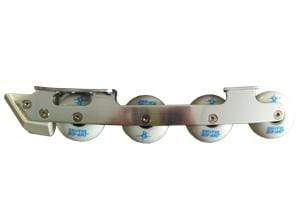
1. Off Ice Skates: these frames are the closest feeling to the ice. The company was founded in 2008 by «The two Karens» in Great Britain. Very important: this frame is rockered, which means it mimics better the curve the ice blade has. The biggest feature is the big and low toe stop which mimics perfectly the ice blade toe rake. They also designed their own boots, although a separate frame is also available for purchasing.
Price: starting at $180 / € 165 / £150 (frame only)
Advantages: affordable price, also this frame has the closest feeling to skating on ice.
Disadvantages: this frame is not compatible with other wheels or toe brakes other than the Off Ice brand itself, so it can be pricey.
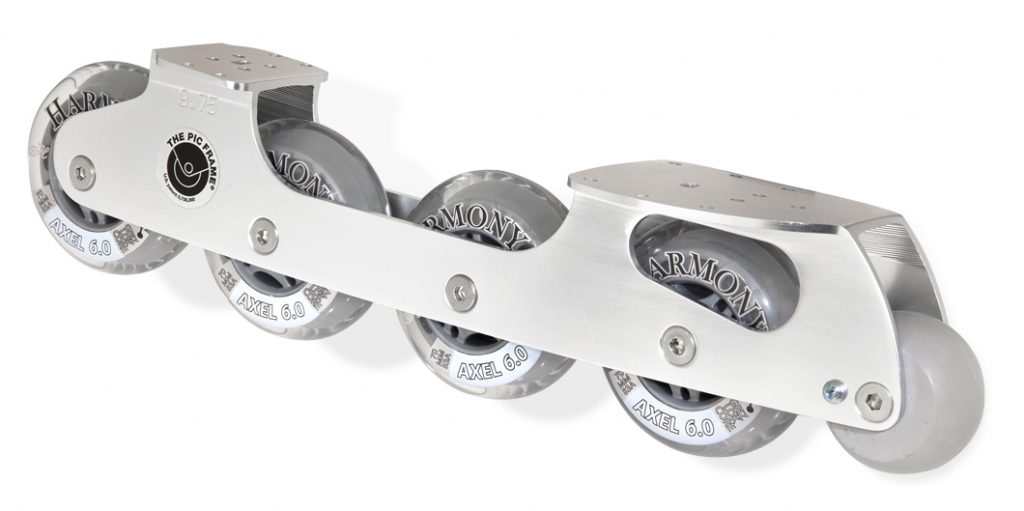
2. PicSkates: The Pic® skate was invented in 1997 by sporting goods designer John Petell in collaboration with master rated ice figure skating coach, Nick Perna. The frames vary from 3 to 4 wheels and this depends on both the style the skater chooses as well as its shoe size. This frame is rockered and features different types of toe brakes. Just like Off Ice skates, PicSkates offer a very similar feeling to skating on ice. Thet have also developed their own wheels and there are different toe brake shapes to choose from (more on Toe brakes here). It has always been the most popular brand, along with Snow White.
Price: starting at $165 / € 150 / £ 135 (frame only, includes wheels, toe stops and hardware tools)
Advantages: affordable price, this frame has a really similar feeling to skating on ice, also the wheels are compatible with other brands.
Disadvantages: the toe brake can only be replaced with a toe brake from PicSkate, so it can be pricey. Also, when the toe brake wears down the metal part of the frame touches the ground.

3. Snow White: Double L’s (Snow White) is a Taiwanese-based inline skate manufacturer that has been specialized in the production of ice figure, inline hockey, inline skates and roller skates since 1990. Double L’s is currently lead by Arthur Lee. He was a pioneer in introducing the use of metal alloys and designs to reduce inline frame weight while increasing frame strength used by many manufacturers today. Snow White’s mission is to promote artistic inline figure skating by developing and manufacturing quality products, and to increase the popularity of this fun and very competitive sport worldwide.
This is one of the most used brands and also one of the most longeve inline figure skates on the market. They have a family of wheel sizes and hardness formulas that are often used by skaters to customize the performance of other brand frames.
Price: starting at $230 / € 205 / £180 (frame only, includes wheels, toe stops and hardware tools)
Advantages: it is one of the most used and reliable brands. If you come from a quad skater background this is the best option. Compatible with most popular wheels and toe stops brands. It is also used by ice champions as their preferred inline figure skate brand.
Disadvantages: it can be difficult to adapt if you come from an ice skating background.

4. Roll Line Linea: this frame was introduced in World Championship 2016 in Novara. This is currently the highest level inline figure skating frame. It is made from avional aluminium, in order to ensure great resistance to shocks and an elevate tensile and torsion strength. This frame features a rockering system, able to simulate the same performances of ice skating. The middle wheel is adjustable up to 6 different positions, so you can create different rockering configurations. Also the third wheel can be adjusted so the frame is longer or shorter.
Price: starting at $499/ € 450 / £400 (frame with wheels, stops, hardware, tools)
Advantages: the adjustable system offers a lot of configurations so you can find the most suitable configuration for you. This frame has an outstanding quality.
Disadvantages: this frame is usually used by the most advanced skaters and beginners cand have a difficult time adjusting and finding the best combination. Also this is the most expensive frame on the market.

5. GH Skates: (formerly known as Golden Horse Skate Co. Ltd) is a solely owned Taiwanese company. They started with quad skates in 1969, occupying 80% of the market share in Asia, and in 1997 jumped onto the inline figure skating wagon. One of the most remarkable features of this frame is its llamative golden colour, very different from the other available frames.
The frames are available with or without their custom boots, which usually sold attached to a boot, and are divided in four categories: Loop LT for basic level (single jumps), Classic for middle level (double jumps), Leader for advanced (double and triple jumps) and Maestro for high level (triple jumps and intrincated footwork). All boot levels including Maestro can also be purchased in white, pink, black or blue. There is an option to buy the boot completely made to order according to skater’s measurements at no additional charge. Also this frame does not have a rockering itself, the rockering is created by combining wheels with different sizes (the middle one is the biggest). The price is comparable to other frames.
Price: starting at $250 / € 220 / £200 (frame with wheels, stops, hardware, tools–more with boots)
Advantages: the boots can be made to order so they will adjust perfectly to the skater’s feet (one of the most important facts to perform properly). Also there is a variety of boot colours to choose from (white, blue, pink, black, light pink or teal), which gives inline figure skating a fun and new look. The made to order boots are free or very affordable. Compatible with all kinds of wheels.
Disadvantages: experienced skills are needed in order to attach the frames to regular skating boots other than the ones provided by GH itself.

6. Graf Figure: this frame is made from aluminium, ans it is rockered. It is suitable for figure skating and ice dancing elements.
Price: starting at $225 / € 200 / £170 (frame only, includes wheels and toe stops)
Advantages: can be sold with boots already attached from the same brand.
Disadvantages: higher price than other brands that offer similar things.
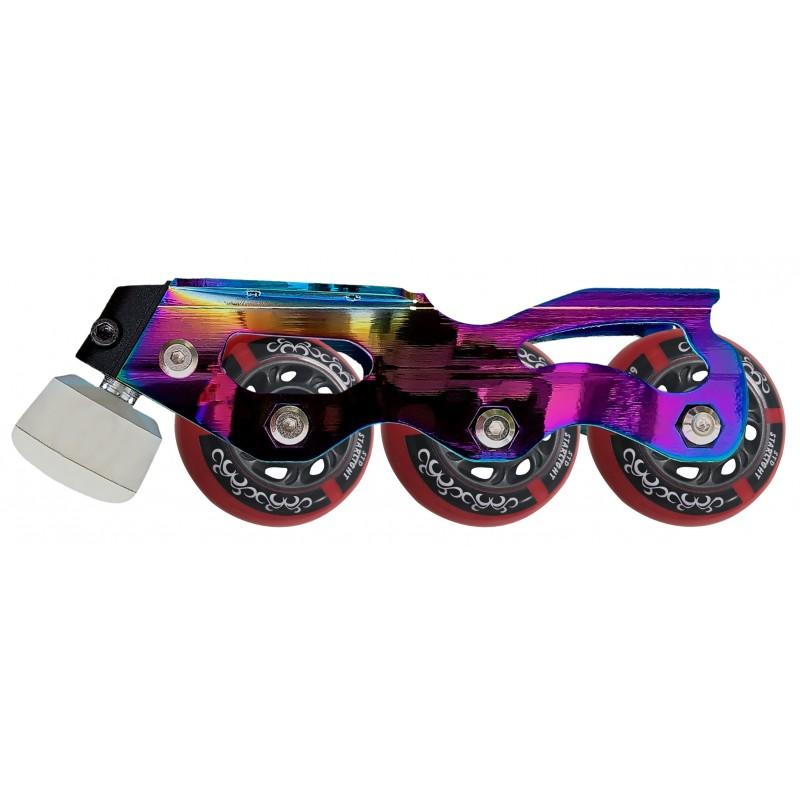
7. Starlight STD: made in Spain by Carlos Mur, these frames are the latest addition to inline figure skating frames. These have a llamative chromed colour that shines in every possible way! This frame has three 68mm rockered wheels (with different hardness) and offers a feeling similar to ice skating. Features a low gravity centre frame.
Price: starting at $330 / € 295 / £260 (frame only, includes wheels, toe stops and hardware tools)
Advantages: the colour adds a bit of fun to skating. The wheels are significatively smaller than other brands, which helps with maneuverability. The toe stop is adjustable. Compatible with all kinds of wheels and toe stops.
Disadvantages: the price is high compared to more adjustable frames like Roll Linea. Skaters with larger sizes can find the wheels too small. The colour can be too llamative for some more traditional skaters.